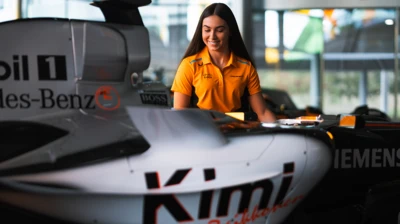We've updated our Privacy and Cookies Policy
We've made some important changes to our Privacy and Cookies Policy and we want you to know what this means for you and your data.
3D-printed sugar network to help grow artificial liver
Researchers have moved a step closer to creating a synthetic liver, after a US team created a template for blood vessels to grow into, using sugar.
Scientists have long been experimenting with the 3D printing of cells and blood vessels, building up tissue structure layer by layer with artificial cells.
But the synthetically engineered cells often die before the tissue is formed.
The technology, in which a 3D printer uses sugar as its building material, could one day be used for transplants.
The study appears in the journal Nature Materials.
Dr Jordan Miller from the lab of the lead scientist, Dr Christopher Chen, at the University of Pennsylvania, told 91╚╚▒¼ News: "The big challenge in understanding how to grow large artificial tissue is how to keep all the cells alive in these engineered tissues, because when you put a lot of cells together, they end up taking nutrients and oxygen from neighbouring cells and end up suffocating and dying."
The body's cardiovascular system - blood vessels - solves this issue with natural cells and tissues.
So a group of scientists from the University of Pennsylvania and the Massachusetts Institute of Technology (MIT) decided to build a synthetic vascular system that would serve the same purpose - by creating a place where the future artificial blood vessels would be located.
Dr Miller's colleague Prof Sangeeta Bhatia, from MIT, said that the technique was similar to creating the shape of a vase in wax, surrounding it with molten metal and then melting the wax away.
Sugar use
But instead of wax, the team used sugar.
"So far, it's been difficult to make organs big enough so that they could provide useful function - and if you implant any tissue thicker than about a millimetre, we can't provide it enough nutrients without also engineering blood vessels into the tissue," said Prof Bhatia.
"We created a network of places that we wish vessels to grow into, so they would become piping into the tissue, and we printed those in 3D out of sugar.
"Sugar is a very nice material that can be dissolved away in the presence of living tissue, it's very friendly to biological tissue.
"We then surrounded the network with the cells that we would like to be fed by the blood vessels when the tissue is implanted - and once we have this structure of pipes-to-be and tissue, we dissolve away the sugar using water."
Although the researches did not do any implantation, they said they had wanted to demonstrate that it was possible to build the thicker tissue that could be fed by this network of pipes - and this way, to create a full organ in future.
"We showed that you can use a 3D printer to print an arbitrary network of vessels for any tissue shape or any network of blood vessels, and then surround them with cells that you would like to create the organ out of," said Prof Bhatia.
"We tried to make a liver, so we surrounded them with liver cells, but one could do it with any other tissue."
Exciting findings
Prof Martin Birchall, a surgeon scientist at University College London, said the research answered "a lot of fundamental problems in tissue engineering."
"The idea of 3D printing has been around for several years, and certainly it is possible to print virtually anything," he said.
"You can use biomaterials, cells or a combination these, and this group of scientists has correctly identified that the sticking point in all this is going to be vascularity - blood vessels - making sure that you've got sufficient nutrients going in and waste coming out of something that otherwise is going to be a solid block of stuff.
"And if you're going to build something like a kidney, you're going to need that.
"I'm fascinated by their proposals, they're quite a way from clinic yet, the next step is going to be testing it on animals, but it is certainly very exciting."
Top Stories
More to explore
Most read
Content is not available








